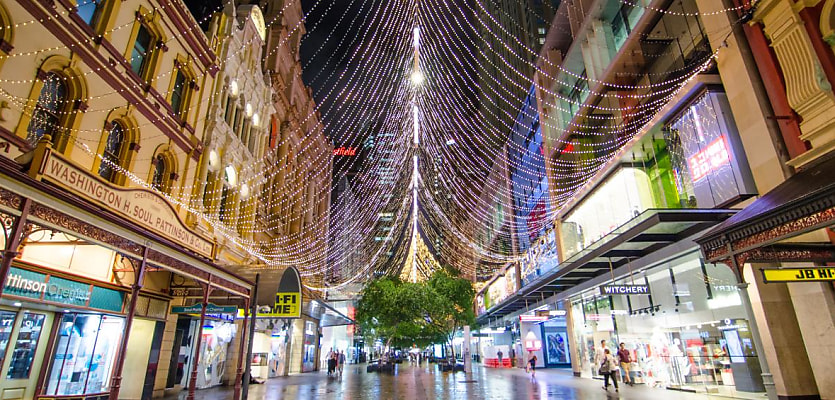The pandemic put Australia’s retail industry through “one of the biggest stress tests imaginable”, but a new report showed that one of Sydney’s busiest retail strips has powered through and emerged even stronger.
Pitt Street Mall in the NSW capital has ranked as the eighth-most expensive global city-based shopping strip in which to rent a store, according to real estate services firm Cushman & Wakefield.
The survey — which was first conducted in 1988 and tracks the top retail streets across 92 cities — ranks the most expensive precincts by prime rental value using Cushman & Wakefield’s data.
This marks the first time the report has been published since 2019, with the latest annual edition providing insight into the comparative performances of the streets in the pre- and post-pandemic periods.
Based on euros per square metre, Pitt Street Mall’s average annual rent (including currency movement) stands at €7,620 or $11,770 per annum — indicating a drop of 24 per cent from the pre-pandemic era. Over the year, the figures are down by 7 per cent.
On a US dollar per square foot basis, and including currency fluctuation, the pedestrian mall’s rental rate stands at US$723 or $1,072.49 per annum.
While Sydney’s shopping district has slipped down one place from its pre-pandemic spot of seventh place, Pitt Street Mall’s strong performance notably comes on the heels of border closures, internal lockdowns and a shift in spending habits brought on by the COVID-19 pandemic.
Topping the prestigious list is New York’s Fifth Avenue, which has reclaimed its position as the world’s most expensive retail street, with average rents of €21,076 per square metre per annum (A$32,542).
While Hong Kong maintained a high-ranking position in 2022, it has relinquished the top spot from 2019 and has slipped in second place — with Tsim Sha Tsui overtaking Causeway Bay as the most expensive precinct in the city-state.
Milan’s Via Montenapoleone overtook two positions to achieve third place and become Europe’s most expensive shopping street for the first time. The Italian shopping district overtook New Bond Street in London (which now sits at fourth place) and Avenues des Champs-Élysées in Paris, which came in at fifth.
Notably, the Sydney shopping area ranks above Seoul’s Myeongdong and Shanghai’s West Nanjing Road.
Within the Asia-Pacific region, Pitt Street Mall captured the fifth spot behind Tokyo’s Ginza and Hong Kong’s Tsim Sha Tsui and Causeway Bay.
Melbourne’s Bourke Street ranked 16th in the Asia-Pacific survey, with an average annual rent of €3,355 (A$5,180 per square metre per annum) — a drop of 21 per cent due to the pandemic lockdowns.
Asia-Pacific region’s retail sphere hit hardest by pandemic
According to the report, rents across global prime retail destinations declined by 13 per cent on average during the depth of the pandemic but have rebounded to just 6 per cent below pre-pandemic levels.
In the Asia-Pacific region, rents fell on average by 17 per cent, impacted by international border closures, which curbed tourism in prime locations.
Dr Dominic Brown, the Asia-Pacific head of insight and analysis at Cushman and Wakefield, said stricter closure of international borders in the region had a more severe impact on that region’s luxury retail strips than elsewhere in the world — evidenced by steeper declines and softer rebound in regional rents.
While many markets have now either fully or partly reopened their borders, international tourist movements in the Asia-Pacific region remain 75 per cent below 2019 levels compared to the global average of 28 per cent and just 16 per cent in Europe.
With many parts of the region still yet to fully reopen, the report noted that some markets would be reliant on the strength of domestic consumption. Accordingly, it also highlighted that the severity of impact on the luxury retail sector and the “spring” in the rebound differ significantly.

Never miss a beat with
Stay across what’s happening in the Australian commercial property market by signing up to receive industry-specific news and policy alerts, agency updates, and insights from reb.
Subscribe to reb Commercial:







You are not authorised to post comments.
Comments will undergo moderation before they get published.